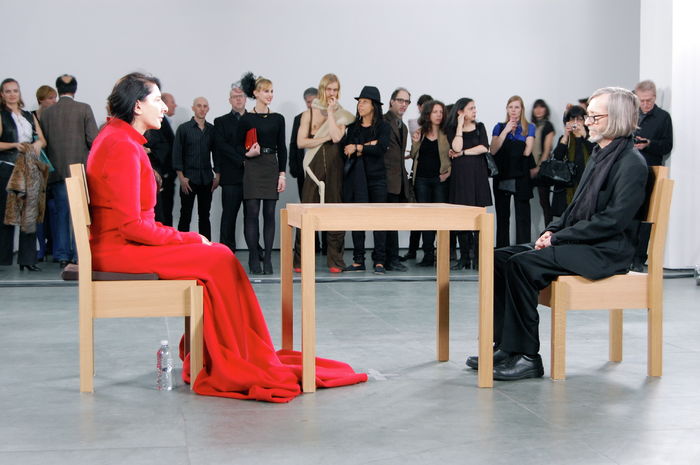Devětsil online exhibition: avant-garde, multi-genre, optimistic
Introducing an avant-garde art association founded a century ago, Karolina Filova recommends an unexpectedly relevant online exhibition.

With great confidence in the power of art to positively shape society, avant-garde art association Devětsil (‘Butterbur’ in Czech) was founded in 1920 in Prague. In early 2020, the Prague City Gallery opened an exhibition dedicated to the association in a bid to shed light on their artwork one hundred years later, though it was sadly cut short in the middle of March due to pandemic-related restrictions. Soon after, the gallery uploaded a virtual version of the exhibition; despite having paid it a physical visit long before the idea of closure would cross anybody’s mind, I found the opportunity of an online re-visit particularly meaningful.
"There is something strangely paradoxical about the exhibition being executed online"
The association, inspired to some extent by the Dada movement, was set up after the First World War when many artists turned their backs on what had come to be perceived as the bourgeois ‘isms’ of the pre-war period. The upcoming decade was a spell of optimism, openness, and innovation – as quoted in the first room of the exhibition, “behind us remains the old time, which is condemned to moulder in libraries, and in front of us sparkles a new day.”
In line with this excitement about the modern world – and being unwilling to confine their art to established genre boundaries – the association set about blending genres of art, especially visualising the non-visual. Aside from more traditional visual art, this included poetry transformed into modern expressive dances or pictorial collages, architecture reflecting trends of modernity, and the fusion of art with non-art. The creative endeavours of Devětsil in many ways reflected the words of prominent artist Karel Teige: “the most beautiful paintings in existence today are the ones not created by anybody.”
In both physical and virtual versions, the exhibition takes the form of a complex of themed rooms, divided (with a hint of self-refuting irony) into different areas of artistic creation: visual art (primitivist, general modernist, surrealist, and artificialist paintings, all exhibited separately), magazines, theatre, scenography, architecture, and photography.
The virtual tour of the exhibition tries to recreate as much of the original experience as possible; not only does it simulate an interactive progression through the different rooms, but it also includes the audio accompaniment from the original exhibition, as well as expandable information boxes, playable videos, and even models in the architectural and theatrical sections. Though the rooms can be a bit difficult to navigate – especially while zooming in to get a decent look at the art pieces themselves – the Google-Street-View-esque awkwardness at least prevents the experience from devolving into a mindless scroll through a digital picture gallery.
"The virtual exhibition expands the meaning of their inter-medial art and hope for the future"
Given the context of Devětsil’s artwork, there is something strangely paradoxical about the exhibition being executed online in light of a worldwide crisis. Being a group that flourished on post-war optimism, it seems their legacy would be undermined by their work surviving only in a restricted form, abstracted from the real-life, physical experience of art. The accompanying leaflet to the exhibition emphasises that it is not only meant as a retrospective, which, in combination with the potentially belittling effect of digitalisation and our current historical knowledge about 1920s optimism, takes on a somewhat ominous tone.
On the other hand, the very same facts can yield a more optimistic message: in light of the artists’ efforts to blur the lines between art and non-art, as well as those demarcating genres, the virtual version of the exhibition elevates the blending effect to a new level. Perhaps the virtual exhibition deepens and expands the meaning of their inter-medial art (and their hopes for the future) in a way that the artists could not have imagined, by merging experiences in a digital context; above all, due to its potential to enter audiences’ personal spaces, this may come closer to Devětsil’s vision of art shaping society.
The running of the Devětsil exhibition is not exactly smooth, but neither is the rest of the world, and so the virtual tour may well be worth the click.
 News / Eight Cambridge researchers awarded €17m in ERC research grants27 December 2025
News / Eight Cambridge researchers awarded €17m in ERC research grants27 December 2025 News / Clare Hall spent over £500k opposing busway 24 December 2025
News / Clare Hall spent over £500k opposing busway 24 December 2025 Comment / League tables do more harm than good26 December 2025
Comment / League tables do more harm than good26 December 2025 Comment / The ‘class’ of Cambridge24 December 2025
Comment / The ‘class’ of Cambridge24 December 2025 News / Caius mourns its tree-mendous loss23 December 2025
News / Caius mourns its tree-mendous loss23 December 2025










